
Sir David Alexander Cecil Low was a New Zealand political cartoonist and caricaturist who lived and worked in the United Kingdom for many years. Low was a self-taught cartoonist. Born in New Zealand, he worked in his native country before migrating to Sydney in 1911, and ultimately to London (1919), where he made his career and earned fame for his Colonel Blimp depictions and his satirising of the personalities and policies of German dictator Adolf Hitler, Italian dictator Benito Mussolini, Soviet leader Joseph Stalin, and other leaders of his times.

The Open Conspiracy: Blue Prints for a World Revolution was published in 1928 by H. G. Wells, when he was 62 years old. It was revised and expanded in 1930 with the additional subtitle A Second Version of This Faith of a Modern Man Made More Explicit and Plain. In 1931 a further revised edition appeared titled What Are We to Do with Our Lives? A final version appeared in 1933 under its original title. Many of its ideas are anticipated in Wells's 1926 novel The World of William Clissold.

The Outline of History, subtitled either "The Whole Story of Man" or "Being a Plain History of Life and Mankind", is a work by H. G. Wells chronicling the history of the world from the origin of the Earth to the First World War. It appeared in an illustrated version of 24 fortnightly installments beginning on 22 November 1919 and was published as a single volume in 1920. It sold more than two million copies, was translated into many languages, and had a considerable impact on the teaching of history in institutions of higher education. Wells modeled the Outline on the Encyclopédie of Denis Diderot.

Charles Gilman Norris was an American novelist. A native of Chicago, Norris worked as a journalist for some years before finding success as a novelist and playwright. His first book was The Amateur (1916). His other novels include Salt (1919), Brass: A Novel of Marriage (1921), Bread (1923), Pig Iron (1926), Seed: A Novel of Birth Control (1930), Zest (1933), Hands (1935), and Flint (1944). He also published three plays: The Rout of the Philistines, A Gest of Robin Hood, and Ivanhoe: A Grove Play (1936).

George H. Doran Company (1908–1927) was an American book publishing company established by George Henry Doran. He organized the company in Toronto and moved it to New York City on February 22, 1908.

Big Money is a novel by P.G. Wodehouse, first published in the United States on 30 January 1931 by Doubleday, Doran, New York, and in the United Kingdom on 20 March 1931 by Herbert Jenkins, London. It was serialised in Collier's (US) from 20 September to 6 December 1930 and in the Strand Magazine (UK) between October 1930 and April 1931.
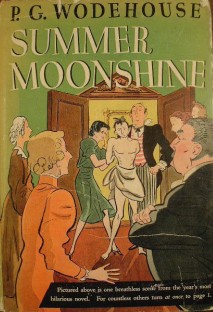
Summer Moonshine is a novel by P. G. Wodehouse, first published in the United States on 8 October 1937 by Doubleday, Doran, New York, and in the United Kingdom on 11 February 1938 by Herbert Jenkins, London. It was serialised in The Saturday Evening Post (US) from 24 July to 11 September 1937 and in Pearson's Magazine (UK) between September 1937 and April 1938.

Quick Service is a novel by P. G. Wodehouse, first published in the United Kingdom on 4 October 1940 by Herbert Jenkins, London and in the United States on 27 December 1940 by Doubleday, Doran, New York.

Milt Gross was an American cartoonist and animator. His work is noted for its exaggerated cartoon style and Yiddish-inflected English dialogue. He originated the non-sequitur "Banana Oil!" as a phrase deflating pomposity and posing. His character Count Screwloose's admonition, "Iggy, keep an eye on me!", became a national catchphrase. The National Cartoonists Society fund to aid indigent cartoonists and their families for many years was known as the Milt Gross Fund. In 2005, it was absorbed by the Society's Foundation, which continues the charitable work of the Fund.
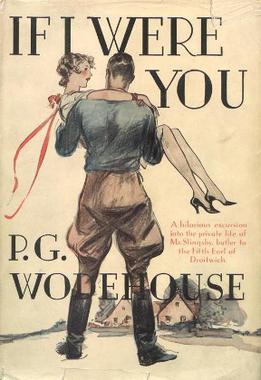
If I Were You is a novel by P.G. Wodehouse, first published in the United States on 3 September 1931 by Doubleday, Doran, New York, and in the United Kingdom on 25 September 1931 by Herbert Jenkins, London.

Frederick Upham Adams was an American inventor, writer, editor, and political organizer. He was born in Boston, Massachusetts, the son of an American Civil War veteran and mechanical engineer. He died on August 28, 1921, at Larchmont, New York. In 1886, he invented the electric light post.

Men Like Gods (1923) is a novel, referred to by the author as a "scientific fantasy", by English writer H. G. Wells. It features a utopia located in a parallel universe.

Cyril Hume was an American novelist and screenwriter. Hume was a graduate of Yale University, where he edited campus humor magazine The Yale Record. He was an editor of the collection The Yale Record Book of Verse: 1872–1922 (1922).
"Best Seller" is a short story by the British comic writer P. G. Wodehouse. A part of the Mr. Mulliner series, the story was first published in the US in Cosmopolitan in June 1930, and in the UK in The Strand Magazine in July 1930. The Cosmopolitan version of the story does not include Mr Mulliner. The Mulliner version of the story was included in the collection Mulliner Nights (1933).
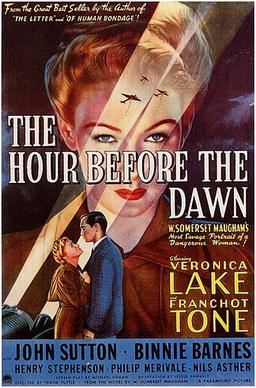
The Hour Before the Dawn is a 1944 American drama war film directed by Frank Tuttle starring Franchot Tone and Veronica Lake. It was based on the 1942 novel by W. Somerset Maugham.
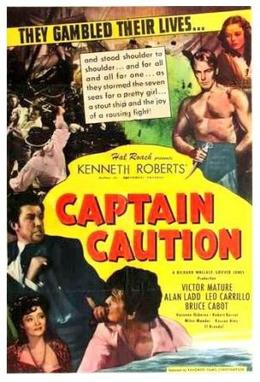
Captain Caution is a 1940 American adventure film directed by Richard Wallace set during the War of 1812. The film stars Victor Mature, Bruce Cabot and Alan Ladd. It was based on the novel of the same name by Kenneth Roberts. Elmer Raguse was nominated for an Academy Award for Sound Recording.

Mr. Blettsworthy on Rampole Island is a 1928 novel by H. G. Wells.

The Bulpington of Blup is a 1932 novel by H. G. Wells. It is a character study analyzing the psychological sources of resistance to Wellsian ideology, and was influenced by Wells's acquaintance with Carl Gustav Jung and his ideas.
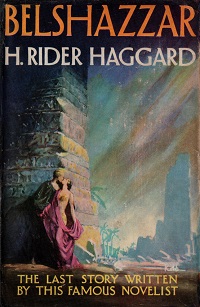
Belshazzar is a historical novel by H. Rider Haggard set in Ancient Babylon. It was written in 1924, and was just finished at the time of his death.


















